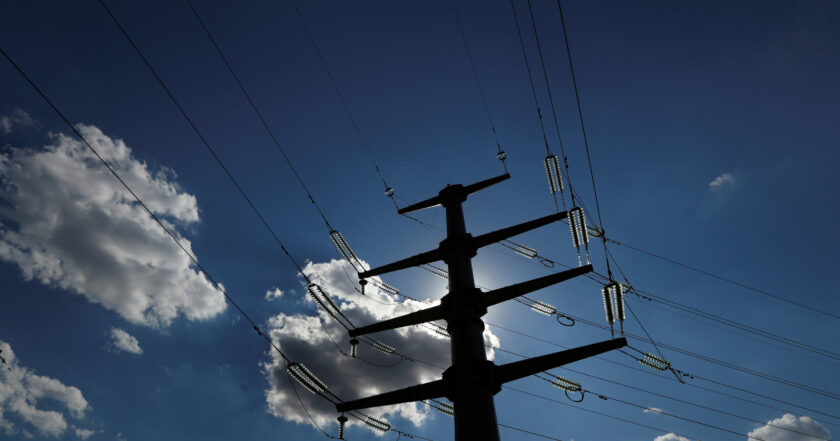Recent massive Russian attacks result in €100 mln in damage to Ukrainian energy infrastructure

Photo: Reuters
The latest Russian attacks caused at least 100 million euros of damage to energy facilities in Ukraine.
Volodymyr Kudrytskyi, head of NPC "Ukrenergo," announced this on Facebook.
"According to preliminary calculations, the check for damages that will be presented to the enemy for the latest attacks reaches at least 90-100 million euros if we talk only about the high-voltage equipment of Ukrenergo," the message says.
Kudrytskyi emphasized that Ukrenergo was prepared for possible attacks on the energy system: a warehouse of the necessary equipment and materials was formed, and the personnel underwent the essential training.
He said it was possible to avoid more severe consequences thanks to engineering fortifications at energy facilities arranged with regional military administrations and the State Agency for Reconstruction and Development of Infrastructure.
"According to preliminary estimates, without this, the damage could have been twice as much, and the consequences even more serious. We thank our colleagues and continue to increase protection in parallel with restoration work," the head of Ukrenergo added.
At the same time, YASNO General Director Serhii Kovalenko stated on the air of a national telethon that due to Russian attacks on the energy infrastructure on March 22, DTEK [the largest private investor in the energy industry of Ukraine – ed.] lost 50% of its electricity-generating facilities.
It was the most massive attack on electricity supply facilities during the entire time of the full-scale war.
He said that the Russians aimed immediately at the generation and distribution facilities of the energy infrastructure. The occupiers damaged Ukrenergo's network nodes. According to him, the restoration of damaged objects will take "not a day or a month," and their repair will have to start from an even worse position than it was in the winter of 2022-2023.
For reference:
Early in the morning on Friday, March 22, Russian military aircraft, including Tu–95MS strategic bombers, were deployed and launched Kh–-101/555/55 cruise missiles. Shortly after, explosions were heard in several cities in Ukraine. The Ukrainian air defense system was activated; however, there were a few strikes.
Critical infrastructure objects have been hit in several cities, and there are victims.
According to reports, Russian soldiers fired ballistic weapons at Kharkiv, resulting in approximately 15 explosions being heard throughout the city. The attack aimed explicitly at vital infrastructure, causing power outages in certain areas and disrupting the water supply due to the shutting down of pumping stations.
Also, during the mass attack of the Russian Federation, 12 explosions were heard in Zaporizhzhia on March 22. There were injured, seven houses were destroyed, and dozens were damaged.
In particular, the Russians hit the Dnipro HPP. There is a blackout threat at the Zaporizhzhia NPP; the line to the ZNPP has been de-energized.
In total, on the night of March 22, the enemy launched more than 150 drones and missiles of various types over Ukraine. Air defense forces shot down 55 Shahed UAVs and 37 missiles.
Prime Minister Denys Shmyhal emphasized that Ukraine's energy system suffered one of the largest air attacks in two years. As a result of the Russian shelling, about 20 substations and power plants, including the Dnipro HPP, were hit.
The Dnipro, Poltava, and Sumy regions are also experiencing power outages. It has been reported that critical infrastructure facilities were affected in the Ivano-Frankivsk, Vinnytsia, Mykolaiv, and Odesa regions. In several regions, schedules have been implemented for power shutdowns.


















































